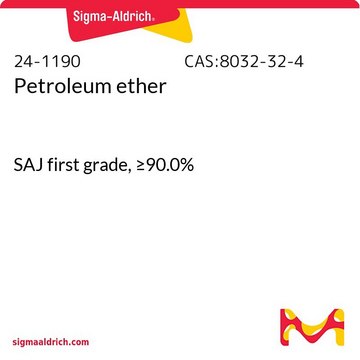推荐产品
等級
SAJ first grade
蒸汽壓力
1 mmHg ( 745 °C)
化驗
≥99.5%
形狀
solid
存貨情形
available only in Japan
pH值
~6.9 (20 °C, 50 g/L)
mp
681 °C (lit.)
SMILES 字串
[K+].[I-]
InChI
1S/HI.K/h1H;/q;+1/p-1
InChI 密鑰
NLKNQRATVPKPDG-UHFFFAOYSA-M
正在寻找类似产品? 访问 产品对比指南
應用
- Photo-physical characterization of high triplet yield brominated fluoresceins by transient state (TRAST) spectroscopy.: This article discusses the use of potassium iodide in TRAST spectroscopy to enhance the photophysical properties of brominated fluoresceins, revealing significant insights into their triplet yield behaviors (Demirbay et al., 2023).
- Effect of different iodide intake during pregnancy and lactation on thyroid and cardiovascular function in maternal and offspring rats.: The study investigates how varying levels of iodide intake, including from sources like potassium iodide, affect thyroid and cardiovascular health in rats during pregnancy and lactation, providing crucial data for understanding iodide′s impact on health (Zhao et al., 2023).
- Interaction between potassium iodide and bovine serum albumin, ovalbumin and lysozyme under different temperature induction.: This paper examines the interactions between potassium iodide and various proteins under different thermal conditions, contributing to a deeper understanding of biochemical processes and protein stability (Pan et al., 2023).
- Response surface methodology combined Box-Behnken design optimized green kinetic spectrophotometric and HPLC methods to quantify angiotensin receptor blocker valsartan in pharmaceutical formulations.: This study utilizes potassium iodide in the development of green analytical methods for the quantification of valsartan, demonstrating the effectiveness of response surface methodology in optimizing these techniques (Haque et al., 2023).
訊號詞
Danger
危險聲明
危險分類
STOT RE 1 Oral
標靶器官
Thyroid
儲存類別代碼
6.1D - Non-combustible acute toxic Cat.3 / toxic hazardous materials or hazardous materials causing chronic effects
水污染物質分類(WGK)
WGK 3
個人防護裝備
Eyeshields, Gloves, type N95 (US)
Pietro Santulli et al.
Human reproduction (Oxford, England), 30(1), 49-60 (2014-11-08)
Are protein oxidative stress markers [thiols, advanced oxidation protein products (AOPP), protein carbonyls and nitrates/nitrites] in perioperative peritoneal fluid higher in women with histologically proven endometriosis when compared with endometriosis-free controls? Protein oxidative stress markers are significantly increased in peritoneal
S C Clement et al.
Pediatric blood & cancer, 60(11), 1833-1838 (2013-07-09)
Thyroid dysfunction has been reported in up to 52% of patients 1.4 years after treatment with (131) I-Metaiodobenzylguanidine (MIBG) in children with neuroblastoma (NBL), despite the use of potassium-iodide (KI). Our aim was to investigate if the incidence and severity
Rahul Singh et al.
Carbohydrate polymers, 91(2), 682-685 (2012-11-06)
We report a new biopolymer electrolyte for dye sensitized solar cell application. To develop polymer electrolyte, potassium iodide have been added in agarose biopolymer matrix and characterized using various techniques like complex impedance spectroscopy, Infrared spectroscopy (IR), X-ray diffraction (XRD)
Zhi-Qi Lao et al.
Organic & biomolecular chemistry, 10(39), 7869-7871 (2012-09-06)
We have developed a new KI-catalyzed method for the imidation of an sp(3) C-H bond adjacent to an amide nitrogen atom by using TBHP (tert-butyl hydroperoxide, 70% aqueous solution) as the oxidant. This novel procedure tolerated air and moisture and
J B Sterling et al.
Journal of the American Academy of Dermatology, 43(4), 691-697 (2000-09-27)
Potassium iodide (KI) is a useful drug in the dermatologic armamentarium. It is successfully used for inflammatory dermatoses, most notably erythema nodosum, subacute nodular migratory panniculitis, nodular vasculitis, erythema multiforme, and Sweet's syndrome. KI is also successfully used for cutaneous
我们的科学家团队拥有各种研究领域经验,包括生命科学、材料科学、化学合成、色谱、分析及许多其他领域.
联系技术服务部门







